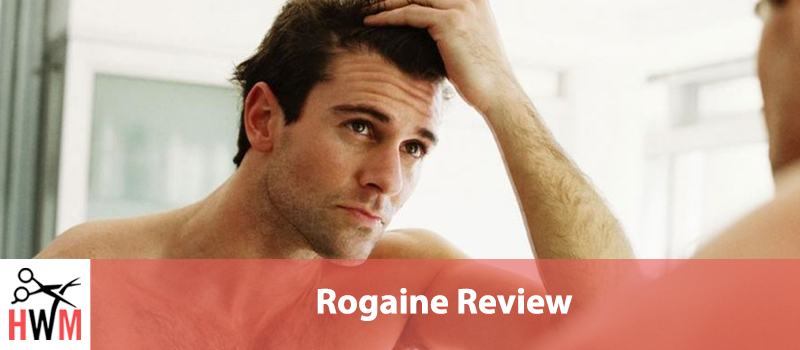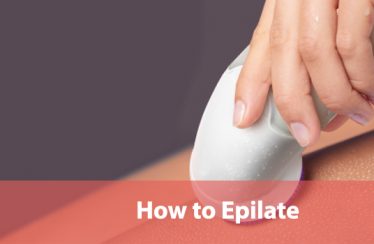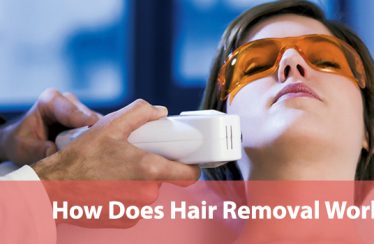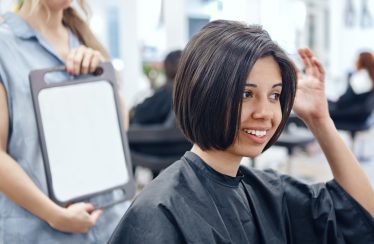If you’re experiencing hair loss (like me) someone has probably suggested that you give Rogaine a try (like me), and, chances are, you’re skeptical about the whole thing (like me). When I decided to go ahead and give Rogaine a try I did a lot of research and made sure I knew what I was getting into.
Still, Rogaine can come with some surprises even if you think you know what to expect. It’s also a lifetime product if you stop using Rogaine all of the hair Rogaine is responsible for will fall out.
That said, let’s talk about what Rogaine does, what kind of results you can see, who it seems to work best for, and my review of the product.
- Does Rogaine Really Give Good Results?
- What Kinds of Hair Loss is Rogaine Good For?
- What is Rogaine?
- How Does Rogaine Work?
- What Does It Feel Like?
- The Freak Out (And Why it’s Totally Normal)
- Hair Growing Back
- My Review
Does Rogaine Really Give Good Results?
Rogaine is the only FDA approved treatment for hair loss. But, it isn’t 100% effective. Just like any medication, some people respond better than others, and other people don’t respond to Rogaine as a hair loss treatment at all.
For the people who do get good results there seem to be three general categories: People with great hair restoration, thick, full hair, and a fully restored hairline, people with moderate hair restoration, thicker, denser-looking hair, but not quite what the hair was before (most common), and people with partial hair restoration that either doesn’t fill in the thinned areas, or doesn’t fully restore the hairline, or both.
Rogaine is effective enough it can cause unwanted hair growth as well. Don’t apply Rogaine foam to any surface (even accidentally) you don’t want to see hair.
Accidental hair growth on your forehead is the most common unwanted hair that can come with Rogaine. When hair is growing on your forehead it probably means some of the Rogaine is dripping onto your face or is being applied lower on your head that you want it.
But it can also grow excess hair in other places, like your neck or back, so, apply carefully.
All that said, hair is important. If you aren’t ready to go for the bald look (I wasn’t), any level of hair restoration is a major confidence, appearance, and pride boost.
Given the moderate price point, about $30 a month for most people, and the fact that most people do respond to Rogaine, I’d say its worth it.
However, if you’re someone who struggles with maintaining a regular routine, Rogaine isn’t for you. Rogaine use is constant. It needs to be a habit, and you can’t stop using it. Your best results will come from using it twice a day, every day, for however long you want to have hair.
A lot of Rogaine failure isn’t the drug, it’s the use. Inconsistent use of Rogaine doesn’t work. Not even temporarily. It takes 3-4 months to see results. You need to commit for that whole time before you know what kind of results you’re going to see.
Skipping a day or two may not hurt you much but skipping a week certainly will. You’re starting over every time you miss more than a couple of treatments.
What Kinds of Hair Loss is Rogaine Good For?
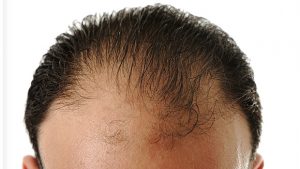
I already mentioned that Rogaine has variable results. It works for most people, but there are some people, and some types of hair thinning and baldness, that don’t respond as well.
Knowing if you have a type of thinning hair that Rogaine is effective for can go a long way toward helping decide whether it’s worth giving a try.
Rogaine is considered most effective for Male and Female Pattern Baldness. It works best for people with a genetic predisposition for hair loss. It also works best to preserve existing hair and is most effective for men under the age of 40.
It can also be useful if you are in the early phases of Traction Alopecia. Traction alopecia is the medical name for hair loss induced by chronic stress on hair and hair follicles. It’s most common for people who wear tightly braided hair, cornrows, or who use harsh chemical styling aids like straighteners and relaxers.
It won’t help as much in situations of stress-related hair loss, stress management and trusting that stress-related hair loss usually passes is your best bet.
Rogaine also won’t help you keep your hair if you’re losing it because of an underlying medical condition or medication. It common to see people asking if Rogaine can help with chemo-associated hair loss, but since Rogaine can’t interfere with the function of the chemo, it doesn’t help.
Rogaine is also most effective in the early stages of hair loss, regardless of the type or cause of hair loss. It can work to preserve and protect your existing hair as much as it works to grow new hair, so the earlier you’ve caught your hair loss the better your results are likely to be.
What is Rogaine?
Rogaine is the brand name of topical treatments formulated with the drug minoxidil, which was originally created and tested as a blood-pressure treatment.
Unfortunately, or fortunately, depending on your perspective, oral prescription minoxidil had one major side effect: unwanted hair growth. That hair growth was fairly unpredictable, but the scientists behind the drug wondered if it would have the same effect applied topically as it had taken internally.
Rogaine, in 2% and 5% formulations, was the result. Minoxidil remains a potent hair-growth aid when applied topically, and the results are significantly more predictable.
Minoxidil also has a very low penetration rate. Not enough of the drug makes it through your skin to have an impact on your blood pressure, so you don’t have to worry about complications from the drug even if you already have low blood pressure.
How Does Rogaine Work?
The short answer to this is simple. We don’t know how Rogaine works, even though it’s been a proven effective hair loss treatment for decades.
Let’s go back to how it was discovered that Rogaine was an effective hair loss treatment in the first place. It was an accidental side effect and not even one that was discovered in the original safety trial. Minoxidil was re-formulated into Rogaine after the original drug hit the market and reports of unwanted hair growth started coming back from patients.
There are some ideas about how it works, they just aren’t proven.
The main theory is that the drug is effective for much the same reason it was a good blood pressure medication, it acts as a vasodilator, relaxing blood vessels and encouraging more circulation.
If that effect extends to the capillaries and blood vessels surrounding hair follicles it may help more follicles stay healthy and actively growing hair, or it may provide the nutrients and other resources needed to grow better hair.
However, as I said, the exact mechanism isn’t well understood. It’s almost as likely that there is a direct effect of the minoxidil on hair follicles themselves, rather than a secondary effect from increased circulation.
What Does It Feel Like?
Rogaine foam, the most common and most easily used version, feels a little bit like a thin, slightly oily, foaming mousse. You’d want to wash your hands after you applied it even there weren’t any side effects from leaving it on your hands too long. It leaves a film on your skin.
In your hair, it takes about ten minutes to dry and then it doesn’t have a ton of effect of the texture or feeling of your hair. A single application doesn’t really make your hair look or feel oily, despite the feeling on your skin, although if you aren’t washing your hair often enough, I imagine it might create an oily texture on your hair, too.
It also doesn’t act like mousse or hair spray. Rogaine on its own won’t add nearly as much texture or body as the other products, despite the rumors that Rogaine just props up your existing hair so that it looks thicker without actually growing any more.
I noticed some dryness in both my hair and scalp and a slight, thankfully temporary, burning sensation with every application. It was never enough to be truly uncomfortable for me, just enough to be noticeable.
I do know that other folks have more drastic reactions to Rogaine, from very dry itchy scalp, very dry hair, and a more intense burning sensation to headaches and some other side effects. Read the directions of the box, and if you’re getting side effects that are more severe than mine you may want to consult a dermatologist or doctor.
I had already switched to a moisturizing hair-repair shampoo and conditioner in an attempt to heal my hair back to its thicker fuller version, so I didn’t notice needing to change my routine much to deal with the dryness from the Rogaine.
I spent a little extra time massaging my scalp while I shampooed. Two reasons, massaging the scalp stimulates more circulation which can help with hair growth and skin health both. Plus, taking the extra time reduced my risk of developing dandruff thanks to the drying effect of the Rogaine. It worked for me.
I also left my conditioner in my hair a little longer every shower, a minute or two was plenty for me. I just wanted to give the conditioner extra time to work to counter the dry straw-like texture Rogaine can sometimes give your hair.
Luckily enough I never had to deal with headaches, unwanted hair growth on my forehead or ears, or any of the other common side effects that can make Rogaine more uncomfortable.
The Freak Out (And Why it’s Totally Normal)
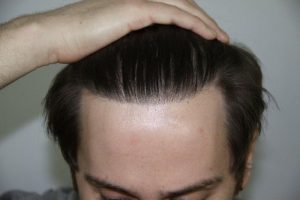
My first major roadblock with Rogaine, and the reason I almost stopped using the product, happened about 3 weeks after I started the treatment.
I knew it was going to take months of continuous use to see real results from Rogaine. I even knew that some hair loss in the meantime is normal. After all, your hair follicles continue going through their typical growth cycle during that first three months waiting for results.
But after three weeks I started having way more hair loss than I was expecting. I woke up with hair on my pillow. I watched hair going down the drain when I showered. I saw it in my brush, it came out on my hand while I styled my hair.
I was lucky in that all that extra hair loss wasn’t too noticeable on my hairline. Sure, the areas where my hair was thinning the most looked like thinning hair, but it wasn’t visibly worse than it had been before.
But the disappointment and fear I felt at the noticeable increase in shed hairs during my day to day routine was still enough to convince me that the Rogaine wasn’t growing my hair back and that instead, it was somehow making my hair loss worse.
So, I went back to the drawing board. I did more research, the whole time fully intending to stop treating my hair with Rogaine and to find something else to try and get my hair back. FDA approval or not.
Fortunately, going back to the research reminded me that most people, men and women both, have the same freak out I was having. The timing was about right too. Early in Rogaine treatment, most people experience a period of increased hair loss.
The more I read, the more I was convinced that the hair loss I was experiencing was fairly mild compared to what others were reporting. You couldn’t see that my hair was suddenly getting thinner, unlike other men who reported that the thin patch on the crown of their hair got bigger, or that their hairline receded noticeably farther during that early treatment period of loss.
So, I took a step back and stuck with the treatment.
Looking for opinions from dermatologists and doctors I realized that what had happened was an important step along the path to better hair.
My hair loss represented my hair follicles moving one stage further in their growth cycle, from the holding phase to the shedding phase, in preparation for more of them to enter their growth phase all at once. And since a growth phase lasts for years, a couple of months of thinner hair was just part of the cost of doing business to get years of better hair.
Getting more of my still-function hair follicles into active growth at once would improve the texture and density of my hair as much or more than re-activating the hair follicles that had stopped producing hair all-together.
So, despite my momentary freak-out, this really was just a normal part of the process and something I would have to deal with in order to see real hair growth in my future. Nothing comes for free, right?
Hair Growing Back
It took 4 months of waiting. 4 months of patiently trusting that my hair would come back and I was someone who was going to respond to Rogaine. 4 months of wondering if I would get great results, moderate results, or barely any improvement at all.
But, slowly enough it actually crept up on me, my hair did start to grow in and grow back. I didn’t have hair loss on the crown of my head so much. No infamous bald spot in the back for me. But I was losing hair from my forehead, especially near my temples, and there was a noticeable U-shape of thinning hair from my forehead to the mid-point on my head. The U ended an inch or so before the true crown of my head.
Rogaine is supposed to work best through the main portion of the scalp, particularly toward the back. My experience supports that, since the hair toward the back of the U shape came in before I noticed the hair around my temples coming back.
It took about 6 months, also very typical, for me to see and feel the difference in my hair. While I started to notice it around 4 months, it took longer for the hair to grow longer, and for more reluctant hair follicles to start producing hair, before it really tapered off and I got a sense of what I could expect from Rogaine.
At 6 months, while I still had a slightly receded hairline at the temples, it looked more like a product of maturity and changing hair and face shape (in a good way) than hair loss. The hair behind my hairline was visibly thick and dense.
I could, and can, feel a texture difference in my hair. It’s thinner, and the color is a little darker than it was before I started to lose it.
I also notice that the hair near my temples and in that U-shaped area doesn’t grow a uniform length.
The difference isn’t huge, and I can manage it with styling and regular haircuts, but some of the new, thinner, hair is shorter than the thicker more robust hairs.
I’ve chalked that difference up to the difference between hair I hadn’t lost when I started the Rogaine, meaning from healthier follicles all along, still being thicker and growing more quickly than the hair Rogaine brought back.
I wouldn’t say that I’m in the “great” category, my hair is definitely different than it was before my hair loss began, and I do have slightly less of it overall, but I would say I fall into the “good” results bunch.
Even with the changes to my hair, I’m pretty happy with this outcome. My hair did come back, it’s manageable, and I don’t feel like a casual observer would know that I use Rogaine.
My Review
I’m going to break down my review into a few chunks. You already know that I’m happy with the results, but there are lots of things to consider with any product you’re going to be using your whole life, so I want to take the time to break down my experience and the different factors that you need to consider when you’re using Rogaine.
Ease Of Use
Rogaine is pretty easy to use, at least the foam version is. I’ve heard that the serum, which you use a small dropper to apply and then massage into your scalp, can be a little trickier.
The foam isn’t too thick or too thin to use easily. The first time I used it I was afraid I’d get something the consistency of shaving cream from the foam can, and that wouldn’t have been very workable.
The biggest downside for ease of use is that you absolutely must remember. Once you’ve got Rogaine as part of your daily routine it gets easier. Plan on a week or two of needing to remind yourself or set an alarm on your phone.
It can be a problem when you’re stressed or distracted, however. Even once it’s a habit it’s a bit like slipping on a diet and letting yourself have a brownie or a full-sugar soda, skip one day and you’re more likely to skip several more. And once you’ve skipped several days you’re setting your progress back.
Comfort
For me, Rogaine was no big deal comfort-wise. The mild burning sensation I got was a lot like the sensation you get with some topical numbing creams. It wasn’t pleasant per-say, but neither was it particularly uncomfortable or painful.
The dryness that came with using Rogaine was more inconvenient, especially the first few days I was using it. My scalp itched, again, not a ton, but enough to be distracting and to make me want to scratch through the day.
Changing my shower routine to spend more time taking care of my scalp, combined with already using a high-quality moisturizing shampoo, seemed to be all I needed, but I know guys who’ve switched to dandruff fighting shampoos or added an extra moisturizing step on their scalp to cope.
Results
The most important factor is the results. In my case, I pretty much got what I wanted. I don’t have the hair from my late teenage years and early twenties, but the hair I do have looks and feels thick enough. I don’t have spots of sparse coverage, and what unevenness is there isn’t visible.
My hair grew back into a more mature hairline, and while the texture and color changed slightly, both still qualify as good hair. All in all, I’ll take the mild discomfort and routine changes in exchange for a lasting head of hair.
Note: One thing I didn’t have to worry about that may be worth considering is that Rogaine is toxic for cats. You need to avoid petting your cat or interacting with them or their food for a while after using Rogaine.
